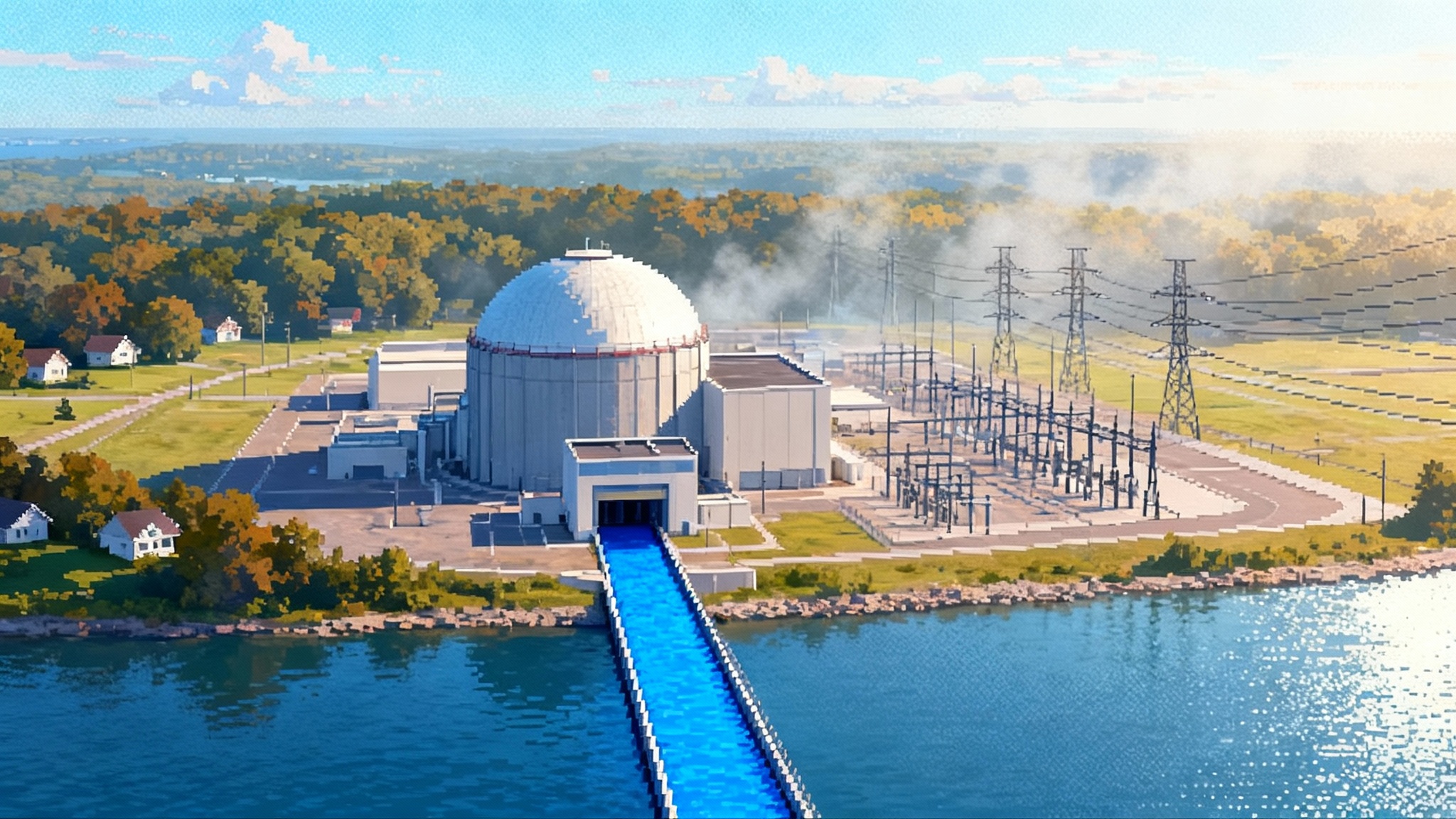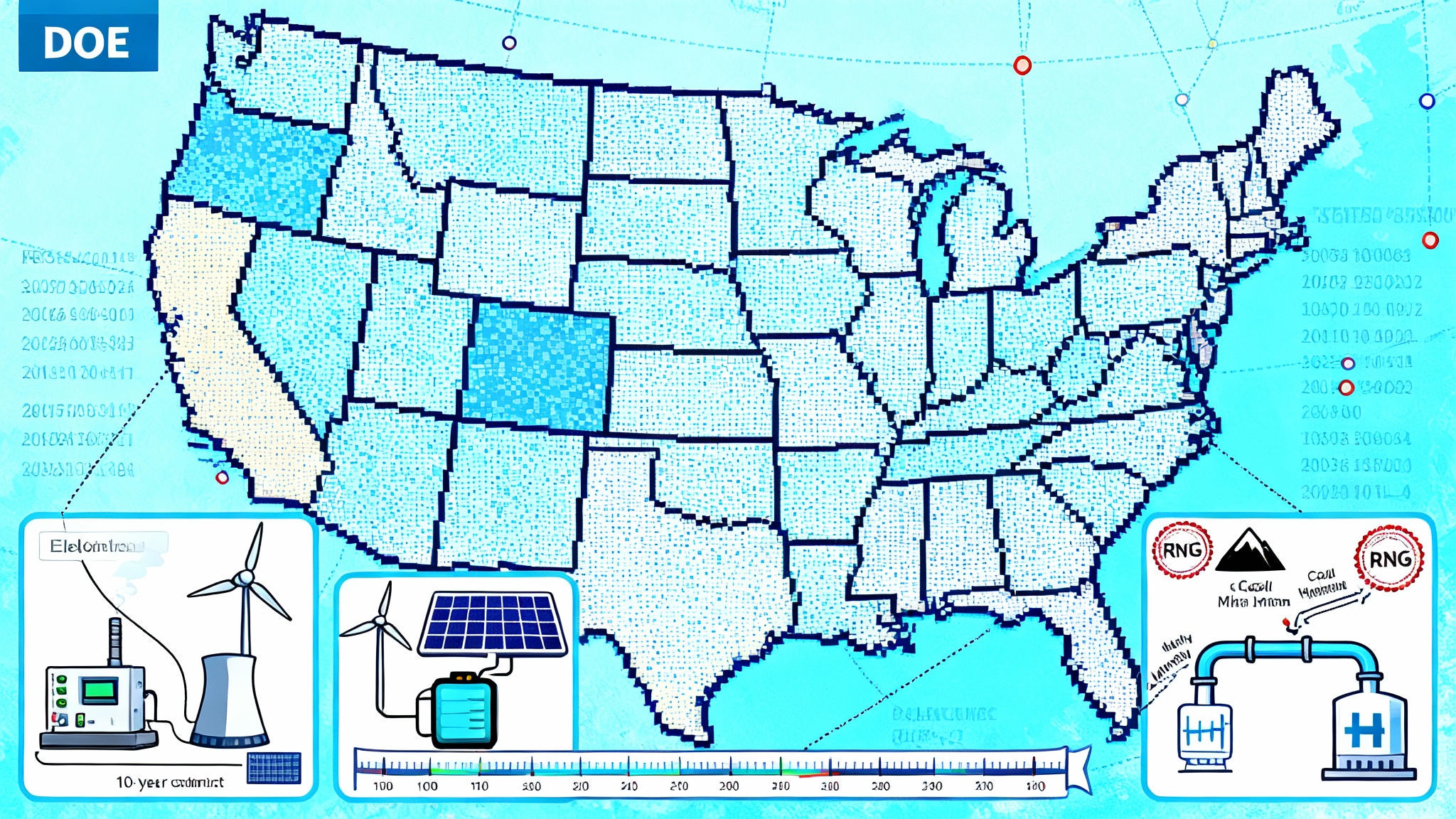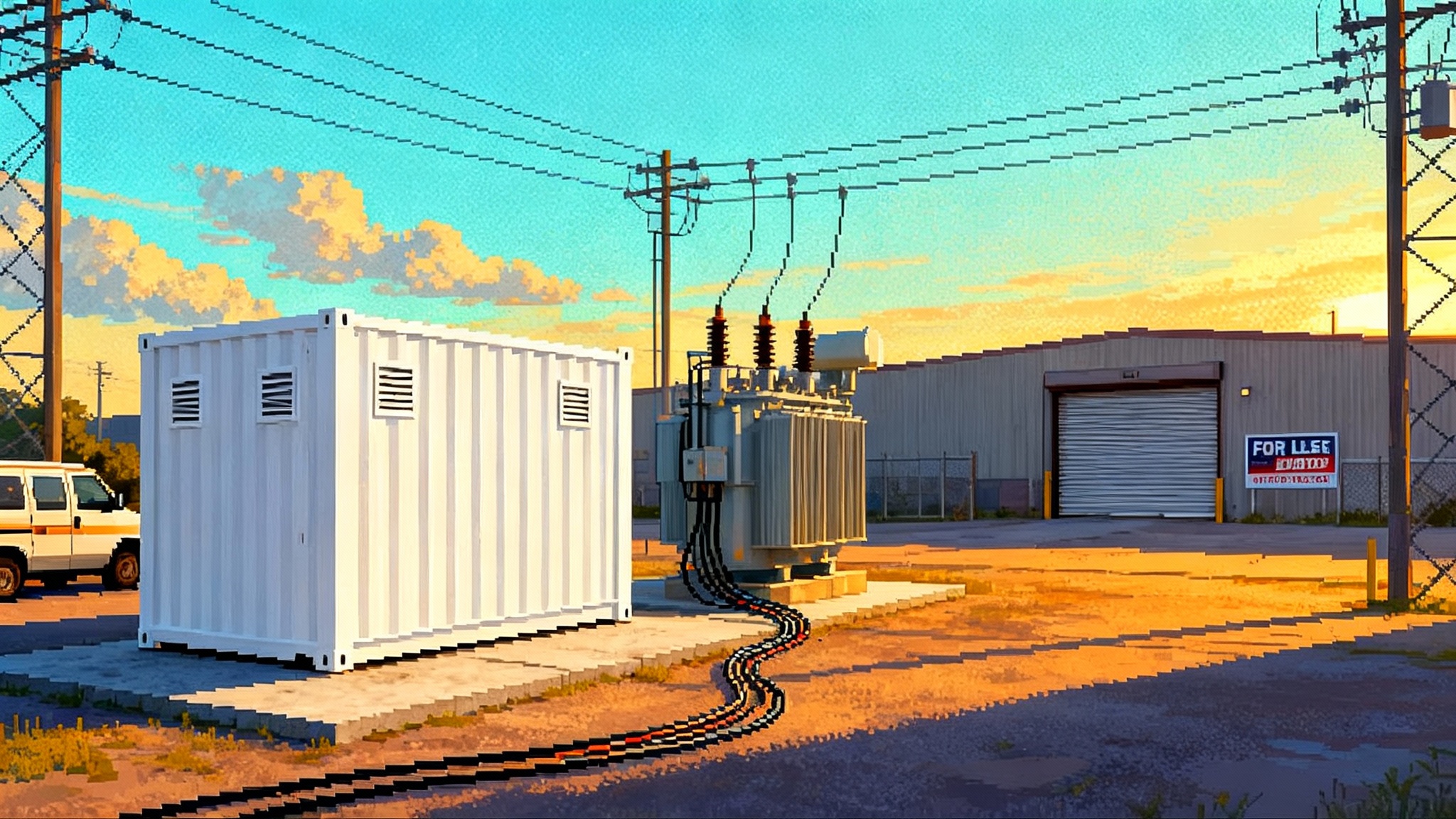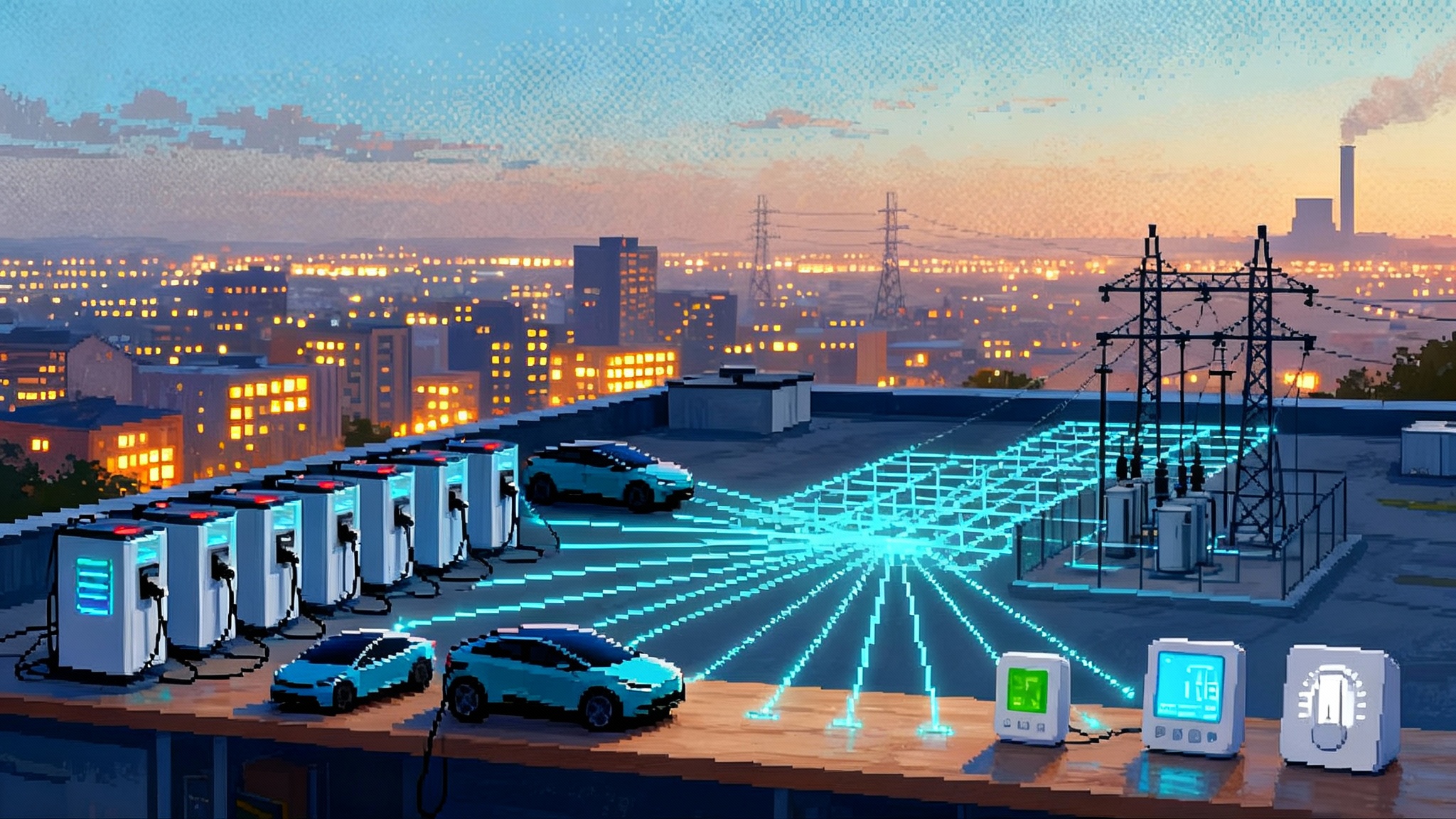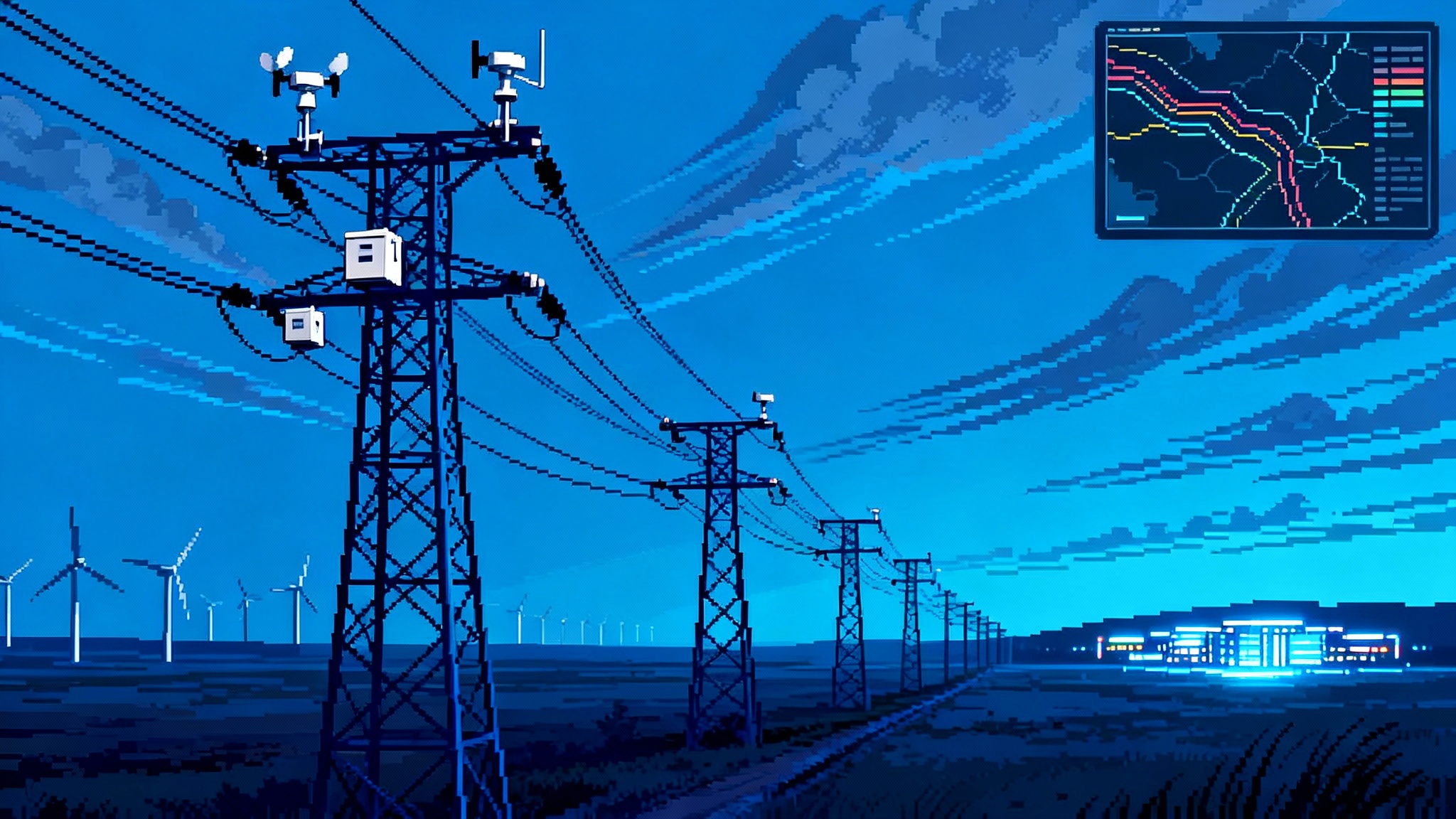The New Utility Playbook for AI: Data Center Rate Classes
Utilities are moving fast to put AI data centers in their own rate class. The new playbook uses minimum-take obligations, demand guarantees, and 24/7 clean-energy clauses to fund grid upgrades without shifting costs to households.
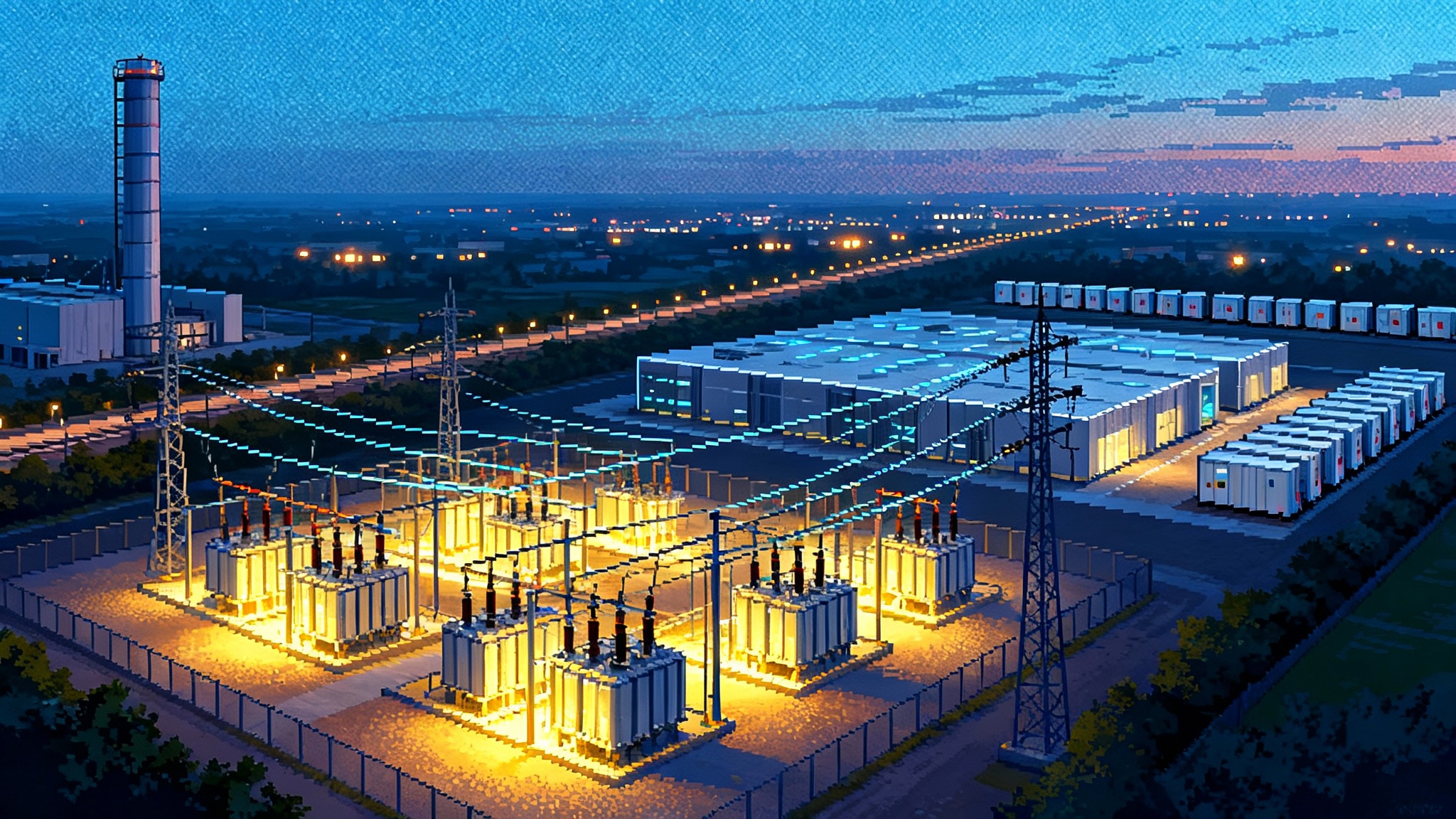
Breaking this week: utilities carve out a new lane for data centers
In the last few days, the idea that artificial intelligence should pay its own way on the grid turned into policy. Arizona’s largest utility asked regulators for authority to impose higher rates on data centers, signaling a stand-alone class with targeted surcharges rather than across-the-board hikes for everyone else. That move, described in public filings and local reporting, is part of a coordinated turn by utilities to ring-fence the costs of serving hyperscale loads. See the coverage of the Arizona utility’s proposed data-center surcharges for how explicit this shift has become.
Virginia is moving too. Dominion Energy sought a separate class for high-energy users, including data centers, backed by a long commitment to pay for the capacity they request even if actual consumption later falls short. The company’s filing spelled out the logic in unusually plain terms: protect residential customers from stranded costs while giving the grid confidence to build. The details are in Dominion’s proposed data-center rate class, including a multiyear obligation that functions like a mortgage for grid capacity.
These are not isolated cases. Regulators in Georgia have already blessed rules that let the utility require minimum bills, assign upstream costs, and stretch contracts to 15 years for loads over 100 megawatts. In Ohio, regulators upheld a rate design that makes large new customers pay for a portion of the capacity they asked for even when they do not fully use it. In California, commissioners created an interim pathway that accelerates transmission-level hookups only when the applicant pays up front for grid work, an approach that mirrors an interconnection fast-track approach. The trend line is clear: utilities are creating dedicated rate classes and adding targeted surcharges so households are not asked to underwrite a power-hungry computing boom.
The new playbook, explained in plain English
Think of the grid like an airport. If you want to land a fleet of jumbo jets every hour, the airport must lengthen runways, build more gates, and hire more staff. The airport will not stick every traveler with the bill for your fleet. It will sign a long-term agreement that guarantees revenue and justifies construction.
Utilities are now using a similar playbook for data centers:
- Minimum-take obligations: The customer agrees to pay for a fixed share of the capacity it reserves, every hour of the month, whether it uses the power or not. This is akin to booking an airline seat you pay for even if you miss the flight.
- Demand guarantees: The customer makes a long commitment, often 10 to 15 years, to cover the cost of the generation, transmission, and distribution upgrades built to serve it. If the customer downsizes or leaves, payments continue. This shifts risk off of households.
- 24/7 clean-energy clauses: Instead of matching annual megawatt-hours with renewable energy credits, the customer agrees to procure carbon-free electricity in the same hour and in the same grid region as consumption. This turns clean energy from a yearly average into an hourly reality.
Each component is designed to do two things at once: unlock investment in new capacity and prevent cross-subsidies from regular households.
Why this matters for 2026 to 2032 capacity additions
Minimum-take and demand guarantees act like off-balance-sheet collateral. They give planners the confidence to add steel in the ground on three tight timelines.
- Fast gas for reliability
- What gets built: Simple-cycle gas turbines of 200 to 500 megawatts that can start in minutes and stabilize the grid during heat waves and cold snaps. These plants are modular, can be sited near existing substations, and often share pipelines with industrial loads.
- Why the playbook helps: A 15-year demand guarantee supports the financing of peaking units that might only run a few dozen hours per year. Without minimum-take revenue, those plants are hard to justify well ahead of actual emergencies.
- Key guardrail: Utilities can require data centers to accept economic curtailment during the tightest hours unless they pay for firm service. That keeps plants sized for true reliability needs rather than every possible surge.
- Big batteries for flexibility
- What gets built: Four-hour utility-scale batteries in 100 to 300 megawatt blocks, plus early pilots of eight-hour chemistries and pumped hydro expansions where feasible.
- Why the playbook helps: A reservation charge on reserved capacity, regardless of actual hourly usage, gives batteries a dependable revenue floor. Tie that to 24/7 clauses and you create a market for midday solar soak and evening discharge that lines up with hyperscale computing’s round-the-clock needs.
- Key guardrail: Tariffs can cap the share of storage paid for by general ratepayers during the initial build, with the data-center class paying for accelerated depreciation if they want storage in specific locations.
- Transmission and substation upgrades
- What gets built: New 230 kilovolt lines, reconductoring of existing corridors, dynamic line ratings, and large new substations plus high-capacity feeders into industrial zones.
- Why the playbook helps: Minimum-take payments fund the carrying cost of big wires that do not reach full utilization on day one. Refundable line-extension deposits and contribution-in-aid of construction agreements ensure the beneficiary pays first, then gets partial refunds only if others connect later.
- Geothermal for firm clean supply
- What gets built: Binary plants and enhanced geothermal systems in the West and near legacy fields that can deliver continuous, low-carbon output. New projects can be paired with point-to-point transmission or dedicated offtake contracts.
- Why the playbook helps: 24/7 clauses create hourly demand for firm clean energy rather than just annual credits. Long commitments match the financing needs of geothermal developers and derisk transmission contracts tied to new fields.
The outcome is not guaranteed megaprojects. It is a steady drumbeat of modular, financeable additions that keep pace with load while insulating households.
What a fair data-center tariff looks like
Below is a template with concrete numbers utilities can tune to local conditions. The point is to make costs explicit, assign risk to the beneficiary, and protect residential customers from future reversals.
- Eligibility: New or expanding customers with peak demand greater than 25 to 50 megawatts and a monthly load factor above 70 percent.
- Contract term: 12 to 20 years with nonbypassable obligations for transmission and distribution assets that are not repurposable if the customer departs early.
- Minimum-take: 80 percent of contracted capacity for generation, 90 percent for transmission and distribution. Assessed every hour, monthly settlement to avoid gaming.
- Reservation charges:
- Generation capacity: 8 to 12 dollars per kilowatt-month for firm service. Indexed to a capacity benchmark, with a floor.
- Transmission and distribution: 9 to 13 dollars per kilowatt-month combined, location specific.
- Energy charges: Standard volumetric rates plus real-time pricing adders during critical hours. Optional curtailment credit of 500 to 1,000 dollars per megawatt-hour returned to the customer if they voluntarily shed load in reliability events.
- Demand ratchet: 70 to 80 percent for 12 months to reflect the cost of standing up dedicated facilities.
- 24/7 clean-energy clause: Hourly matching within the balancing area at a minimum of 85 percent, rising to 95 percent by year five. Shortfalls are settled at the greater of 50 dollars per megawatt-hour or the market price for clean replacement plus a 10 percent administrative adder. Hourly match can be met via new power purchase agreements, storage firming, or direct investment.
- Interconnection security: Refundable deposit equal to 12 months of reservation charges plus 20 percent of estimated network upgrades. If project scope drops after final design, the nonrefundable portion covers stranded engineering and long-lead materials.
- Stranded-asset backstop: Early termination triggers a lump-sum payment equal to the remaining net book value of dedicated assets, discounted at the utility’s authorized return. This is standard in pipeline and telecom contracts and maps cleanly to power.
- Consumer firewall: A separate balancing account for the data-center class. If actual costs exceed what the class paid, surcharges apply only within the class. If costs come in lower, credits stay within the class. Residential and small business customers are not a counterparty.
This tariff structure separates two questions. What capacity is needed to serve a big new load. Who pays if that capacity becomes unnecessary. The answers should be, respectively, the planners and the customer that triggered the cost.
A concrete example
Imagine a new 150 megawatt campus with an 85 percent load factor and a 15-year contract.
- Contracted capacity: 150 megawatts
- Minimum-take: 120 megawatts for generation at 80 percent, 135 megawatts for transmission and distribution at 90 percent
- Reservation charges:
- Generation: 10 dollars per kilowatt-month x 120,000 kilowatts = 1.2 million dollars per month
- T and D: 11 dollars per kilowatt-month x 135,000 kilowatts = 1.485 million dollars per month
- Energy: Billed volumetrically, say 60 to 90 dollars per megawatt-hour depending on time of use and market, with real-time adders in scarcity hours.
- 24/7 clause: If the campus misses its hourly clean-match by 10,000 megawatt-hours in a month, it pays 500,000 dollars at the 50 dollar shortfall price, or the higher market price if applicable.
- Interconnection security: Suppose upgrades cost 140 million dollars. The deposit covers 12 months of reservation charges, about 32 million dollars, plus 28 million dollars for long-lead equipment. That deposit drops as assets are placed into service.
The monthly fixed bill is roughly 2.685 million dollars before energy, credits for curtailment, and other adjustments. Residential customers never see these fixed charges, and the utility has a clear, bankable revenue stream to finance the required upgrades.
Siting strategies that scale the grid without socializing risk
Where data centers go matters as much as how they pay. Here are practical siting moves that keep timelines short and risk contained.
- Substation-first siting: Site within a few miles of 230 kilovolt or higher substations with available bus capacity. Utilities can publish heat maps showing feeder headroom and planned reconductoring. Minimum-take obligations should be higher for sites that require greenfield substations.
- Retired coal and gas conversions: Legacy sites have rail, water, and high-capacity wires. Converting them into compute campuses cuts transmission timelines and gives communities a replacement tax base. Contracts can dedicate a share of fixed payments toward local transition funds.
- Behind-the-fence firming: Co-locate 50 to 150 megawatts of simple-cycle turbines or reciprocating engines plus 200 to 400 megawatt-hours of batteries. The utility retains dispatch rights during emergencies in exchange for interconnection priority.
- Geothermal and wind anchors: For West-side grids, link hourly clean-energy obligations to new geothermal offtakes or repowered wind with storage. That aligns corporate procurement with regional reliability instead of chasing least-cost annual credits far away.
- Transmission-aligned clustering: Require large projects to join clusters tied to a planned line or reconductoring window. Priority queueing and lower deposits apply inside clusters. Outside clusters, minimum-take percentages and deposits increase. This aligns with NIETC corridors set 2026 to 2032 build.
Each siting decision should have a clear price signal in the tariff. If the site is expensive to serve, the fixed charges and minimum-take percentage should go up. If the site is easy to serve, the customer gets cheaper fixed charges and faster timelines.
How households are insulated
Dedicated classes are not just a label. They are accounting and legal structures that decide who pays when reality changes. The protections for residential customers are straightforward.
- Separate balancing account: Overruns or underruns do not spill into residential rates.
- Nonbypassable recovery for dedicated assets: If a data center shops for energy supply, it still pays for the wires and substations built for it.
- Early exit charges: If a customer leaves, the remaining book value of dedicated assets is recovered from that customer, not from households.
- Targeted surcharges: Any additional reliability measures created specifically for the data-center class, such as bespoke reserves or congestion relief, are paid by that class.
These design choices mirror the way telecommunications and pipelines handle very large customers. The principle is simple. If you trigger the cost, you carry the risk.
What about competition and concentration risk
One worry is that only the biggest buyers can handle minimum-take obligations. That is solvable with design choices that broaden participation without socializing risk.
- Aggregated service: Allow multiple medium-sized campuses to form a consortium that signs one tariff agreement. The group posts a shared deposit and the utility treats them as one customer for ratchets and 24/7 matching.
- Staged commitments: Let customers scale from 50 to 150 megawatts in three tranches tied to milestones. Reservation charges step up with each tranche. Households stay isolated from risk throughout.
- Open capacity auctions: When a line or substation upgrade is needed, run a simple auction for fixed payments that recover the cost. Winners secure interconnection priority and a lower energy adder.
Competition is not an afterthought. It is how utilities avoid picking winners while still protecting the public.
Regulators can speed approvals without lowering standards
Regulators face a choice between ad hoc deals and repeatable rules. The new playbook favors repeatable rules.
- Set a model tariff: Establish a statewide template with adjustable ranges for reservation charges and ratchets. Utilities can make small changes, but the framework and consumer firewall stay consistent.
- Require 24/7 accounting: Hourly matching can ride on standard grid data. Publish the method and keep it simple to audit.
- Make deposits meaningful: Do not accept letters of interest, require cash or surety backed by corporate credit. Refunds flow only when assets are energized or new customers join the line.
- Measure outcomes: Track how much capacity was added, how much was funded by data-center class payments, and how residential bills moved. Publish the scoreboard annually.
Approvals move faster when everyone knows the rules in advance and when the rules guarantee that households are not the guarantor of last resort.
The bottom line
Artificial intelligence has turned electricity into a front-page business input. You can see it in this week’s filings, in the utilities asking to put data centers in their own lane, and in the willingness to say out loud what planners have known for years. Big, round-the-clock loads require big, round-the-clock commitments. Minimum-take obligations, demand guarantees, and 24/7 clean-energy clauses are not punishment. They are the price of building a larger, cleaner, and more reliable grid without sending the check to families who did not order the extra runway.
The good news is that the tools are ready. A tariff that is clear on fixed charges, firm on risk, and honest about hourly clean energy can unlock fast gas where it is needed, big batteries where they are valuable, new wires where they unlock whole regions, and firm geothermal where it is finally practical. If utilities and data centers adopt the new playbook in 2025, the period from 2026 to 2032 will not be a scramble. It will look like a plan.
The next step is simple. Regulators should publish model terms, utilities should post heat maps and queue priorities, and large customers should sign contracts that match their ambitions. When the bill for a bigger grid comes due, the right class should be waiting to pay it.
